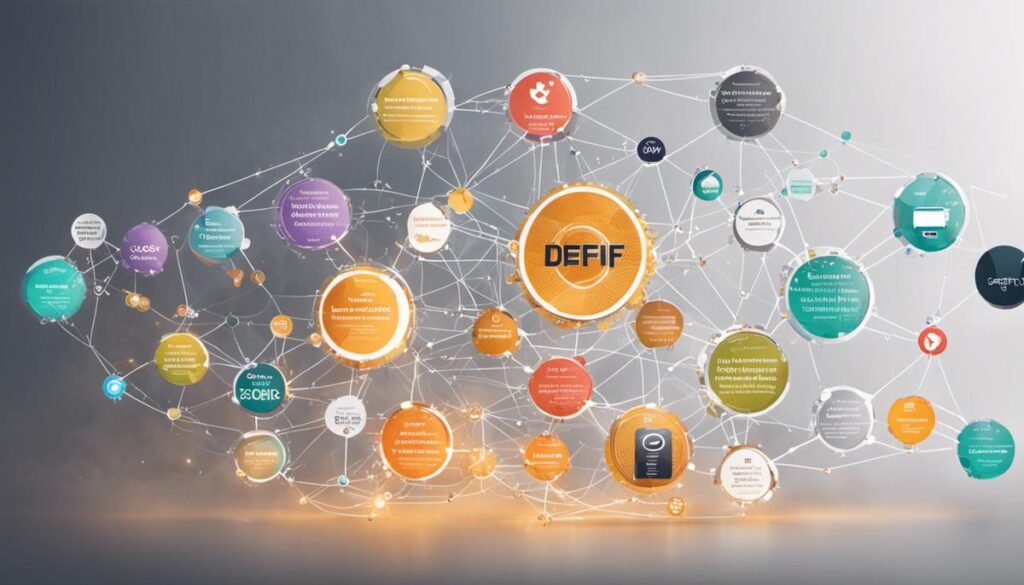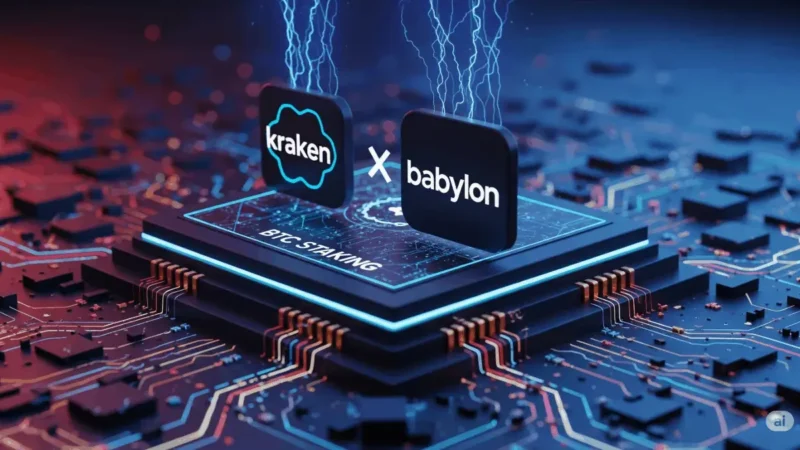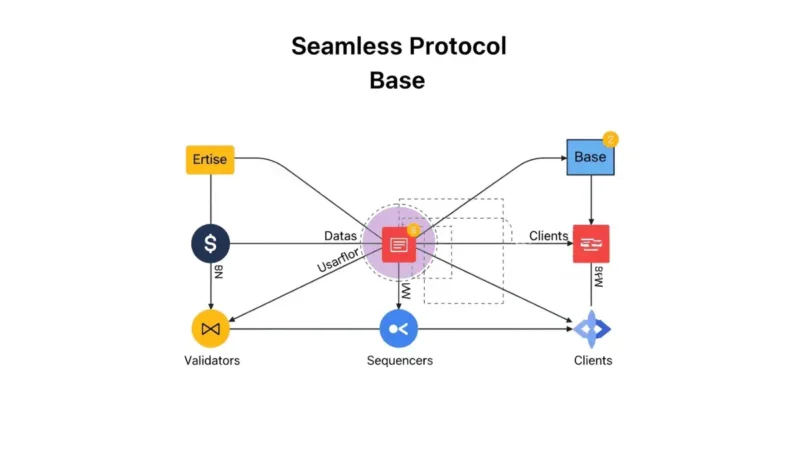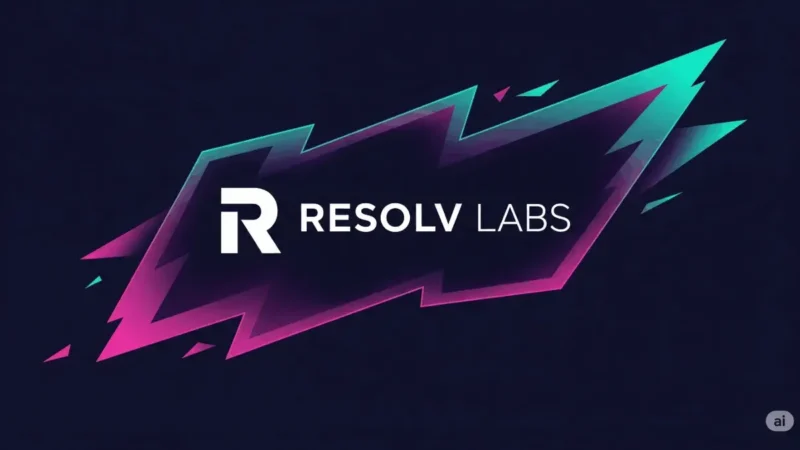A Guide to Decentralized Finance (DeFi)

In the realm of technological innovation and financial evolution, the concept of Decentralized finance, or DeFi, is a rapidly emerging centerpiece. Representing a paradigm shift in the way the world understands and interacts with finance, DeFi leverages blockchain technology to shift reliance from traditional financial intermediaries like banks, brokerages, and exchanges to a more democratized, network-based system. This fundamental change in approach was born out of the need for increased financial inclusion, greater returns on investments, and enhanced control over personal finances. The following sections will delve deep into the concepts, workings, advantages, and potential downsides of DeFi, alongside showcasing some trailblazing DeFi projects and contemplating the future of this revolutionary financial approach.
Defining Decentralized Finance
Decentralized Finance: A New Paradigm
Decentralized Finance, commonly known as DeFi, heralds a revolution in the financial industry. It uses the principles of blockchain technology to reinvent financial systems. Unlike traditional finance, which involves central intermediaries such as banks, exchanges, and brokerages, Decentralized Finance operates without any central authority. Transactions occur peer-to-peer without the necessity of intermediaries, making these processes more efficient, less laborious, and potentially more cost-effective.
The Motivation Behind Decentralized Finance
The birth of Decentralized Finance is largely premised on the various limitations and constraints of traditional financial systems. Banks and other financial intermediaries have historically acted as gatekeepers, controlling access to financial systems and services. This centralized framework not only hinders accessibility but also creates trust and privacy issues. Often, participants must reveal personal details or financial histories to access necessary services.
Decentralized Finance, operating on decentralized blockchain technology, does not require extensive personal information to access services. It leverages transparent, trustless protocols where the operations are visible to all on the network. Furthermore, the risk of a single point of failure is eliminated – an inherent risk in centralized systems.
Foundational Principles of Decentralized Finance
One of the fundamental principles behind Decentralized Finance is transparency. As DeFi applications (often called DApps) are built on public blockchains, their code is open for all to see and verify. This openness not only improves confidence and trust in the system but also allows for public verification of the actions and claims made by these applications.
Interoperability and composability are other pivotal features of Decentralized Finance. Different DeFi applications can interact or “communicate” with each other and can be combined – just like Lego blocks – to create more complex systems. This leads to a highly modular and scalable system, pushing the boundaries of financial services and products.
Moreover, Decentralized Finance systems are permissionless, meaning anyone can access and interact with these systems without any gatekeepers. This kind of unfettered access is a significant shift in the financial landscape and holds the promise of financial inclusion for millions, particularly in developing regions.
Redefining Finance with Decentralized Finance
The financial landscape is witnessing a revolutionary transformation through Decentralized Finance. Pioneering, yet facing challenges such as regulatory clarity, scalability, and improving user experience, DeFi is navigating its path through these hurdles. Despite these obstacles, the unstoppable momentum of Decentralized Finance indicates a future where financial systems could become substantially more transparent, accessible, and democratized.

The Functionality of Decentralized Finance
Understanding the Mechanics of Decentralized Finance
At the center of DeFi lies the innovative use of blockchain technology. The essence of DeFi’s functionality lies in smart contracts – autonomous, digitally binding contracts, the terms of which are encoded directly into the blockchain. These smart contracts empower Decentralized Finance to simulate traditional financial transactions such as lending, borrowing, trading, derivatives, and insurance in a completely decentralized setup.
Decentralized Lending and Borrowing
Traditional lending and borrowing involves a financial institution like a bank that acts as an intermediary. In the DeFi space, this role is eliminated. Instead, a Decentralized Finance lending platform uses smart contracts which automatically match borrowers and lenders, eliminating the need for a middleman. This allows users to lend their assets and earn interest, or borrow assets and pay interest on them. The terms of the loan, including interest rates and repayment dates, are governed by the smart contract.
Decentralized Trading
Decentralized exchanges (DEXs) use smart contracts to facilitate and automate the trading of digital assets. Unlike conventional centralized exchanges, there are no intermediary institutions or custodians involved in the transaction process. Both buying and selling operations are executed directly between users through an automated process. This way, users maintain full control over their funds and trading decisions.
Decentralized Derivatives
Derivatives in the traditional finance industry are contracts that derive their value from an underlying asset. These may be commodities, stocks, currencies, interest rates, or market indexes. In Decentralized Finance, derivatives function similarly but are governed by smart contracts that ensure the execution of the contract without requiring a centralized authority. Decentralized Finance derivatives platforms allow users to gain exposure to real-world assets such as gold or traditional stocks, directly from the blockchain.
Decentralized Insurance
Just like in the traditional economy, insurance protects users against financial loss. Decentralized Finance brings this concept to the blockchain by enabling smart contracts to generate policies for users based on the risk they are willing to take. These decentralized insurance platforms cater to a wide array of financial risks, which may include smart contract failures, stablecoin peg deviations, and even blockchain-wide technical failure. Insurance claims are either validated through automated smart contract mechanisms or through a voting process conducted by token holders.
Wrapping Up
Decentralized finance, relies principally on the usage of blockchain technology, along with smart contracts. This presents a remarkable shift towards greater decentralization and fairness in finance. Decentralized Finance has the ability to perform core financial operations such as loans, trades, insurance, and derivatives, previously governed by central authorities, in a peer-operated setting. This transition has thereby amplified the security, transparency, and efficiency of these transactions.

Pros and Cons of DeFi
Enhancing Financial Accessibility
Decentralized finance systems offer their own unique advantages, one of the main ones being the potential for greater financial inclusion. Traditional financial services often come with the requirement for extensive paperwork and an official banking relationship. In contrast, DeFi services can be accessed by anyone with a simple internet connection. This aspect greatly heightens financial accessibility, providing an avenue for the otherwise ‘unbanked’ or ‘underbanked’ populations around the globe to advantageously use financial services.
Higher Returns on Investment
DeFi also offers potentially high returns on investment compared with conventional financial products. By eliminating the need for intermediaries, DeFi can pass on more of the returns to the users. Furthermore, DeFi platforms often offer liquidity mining and yield farming opportunities, where users can earn much higher returns than in traditional finance.
Transparency and Control Over Personal Finances
DeFi applications are typically built on transparent blockchain technology, which allows anyone to verify transactions and balances. This transparency can reduce fraud and censorship, and provide a higher level of security for users. Additionally, as DeFi applications are permissionless, users have complete control over their personal finances and can transact without the need for approval from a centralized authority.
Complexity and Risk
Despite these advantages, DeFi is not without its downsides. The main issues come from its complexity and the risks associated with it. Most DeFi applications require a strong technical knowledge of how crypto and blockchain work. Moreover, most DeFi contracts are irreversible, which means that once a transaction is made, there’s no turning it back, increasing the potential for financial losses if a mistake is made.
Scalability Issues
Scalability is another major concern in DeFi. As the number of users continues to grow, the Ethereum blockchain, which most DeFi applications are built on, has struggled to keep up. This has resulted in high transaction fees and slow transaction times, which can hinder the adoption and usability of DeFi applications.
The Potential Instability of Decentralized Finance
Decentralized Finance (DeFi) inherently carries the risk of contributing to financial instability due to its high degree of leverage, which can exponentially increase financial risk. Additionally, since most DeFi platforms operate in a largely unregulated environment, the level of consumer protection during a market downturn or if a DeFi application fails is significantly reduced.

Decentralized Finance Projects and Applications
Introducing Uniswap: The Pioneer in Automated Market Making
Uniswap has forged a revolutionary path in the DeFi space as a fully decentralized protocol integrated on the Ethereum blockchain. It allows seamless trading between ERC-20 tokens, a kind of blockchain-based token predominantly used in the DeFi sector. For this, Uniswap utilizes liquidity pools where users can provide liquidity by depositing their tokens. These tokens are then available for others for trading, and in exchange, liquidity providers get fees. Interestingly, this innovative system operates without any traditional market makers – eliminating any intermediaries and thereby democratizing access to trading.
MakerDAO: Issuing Stablecoins
MakerDAO is another cornerstone project in the DeFi space. It’s a decentralized autonomous organization, or DAO, that allows users to issue and manage the DAI stablecoin, a cryptocurrency that’s pegged to the US dollar. Users achieve this by collateralizing their Ethereum or other digital assets into what’s called a Maker Vault. This results in the issuance of DAI, while simultaneously creating a debt against the collateralized assets. Users can later retrieve their collateral by returning the DAI and paying a stability fee. This form of over-collateralized lending has the potential to greatly expand the field of cryptocurrency loans.
Compound: Lending and Borrowing Cryptocurrencies
Then there’s Compound, a decentralized lending protocol that allows users to lend and borrow cryptocurrencies. Described as an “interest rate market protocol,” Compound operates on a supply-and-demand model. Bit by bit, as more users supply a particular asset into the platform, interest rates go down; and when more users demand a certain asset, interest rates go up. This setup allows savers to earn competitive yields on their assets and lets borrowers get loans in a peer-to-peer manner.
Yearn.finance: Yield Farming Optimization
Yearn.finance is another exemplary DeFi project, which revolves around yield farming. The protocol will automatically move users’ deposits between several lending protocols – such as Aave, Compound and DyDx – to ensure they are always farming the best yield possible. This not only maximizes the profit for liquidity providers, but also simplifies the often complex and time-consuming process of yield farming.
Aave: Flash Loans and More
Finally, Aave is a DeFi platform that has gained recognition by enabling unique financial concepts like flash loans – uncollateralized loan options, which should be borrowed and repaid within one single transaction. This means, within the same block of a blockchain, you can take out millions of dollars worth of cryptocurrency loans without collateral, as long as you pay it back within the same block. Aave also provides other services such as stable interest rates and rate-switching, making it an innovative player in the DeFi space.
These five DeFi projects are just the tip of the iceberg when it comes to the potential future of finance. They represent the concept of a financial system that is more decentralized, transparent, and accessible. As DeFi continues to evolve and mature, these projects paint a promising picture of what the future might hold.

The Future of DeFi
Navigating Through Technological Progress for the Future of DeFi
The future path for DeFi is intrinsically linked to technological advancements, with blockchain technology spearheading this movement. DeFi, being a predominant application of blockchain, stands to make substantial gains as this technology continues to improve. Many speculate that we may soon see a “programmable economy,” where numerous financial transactions and agreements may be automated through blockchain-based smart contracts. This could dramatically improve efficiency and significantly reduce the need for intermediaries.
For example, the upcoming Ethereum 2.0 gives us a sneak-peek into the possible future direction of DeFi. The upgrade introduces advanced features such as sharding and a proof of stake consensus mechanism to enhance transaction speed and scalability. These improvements have the potential to drive adoption of Ethereum-based DeFi platforms by tackling issues like congested networks and high transaction fees head-on.
Potential Regulatory Challenges for DeFi
Regulations in DeFi space pose a significant challenge for the future of DeFi. As decentralized finance grows in scale and popularity, it’s expected to come under the radar of global regulatory bodies more rigorously. Matters concerning user protection, anti-money laundering (AML), and counter-terrorism financing (CTF) will likely become key regulatory focus areas.
The absence of intermediaries in DeFi means users assume full responsibility for their financial decisions. Therefore, regulating DeFi would pose challenges as enforcing user protection laws in a decentralized setup is complex. Also, anonymity in DeFi transactions invites regulatory concerns related to AML and CTF, which will need guidance from global regulatory entities to address.
Adoption of DeFi and Its Impact
The mass adoption of DeFi can significantly impact the traditional financial landscape. As individuals and businesses become more aware of the advantages decentralization provides, such as resilience to single points of failure and censorship, the adoption of DeFi could accelerate.
Experts predict a future wherein traditional banking services like lending, insurance, and asset management being offered on a DeFi platform. These platforms could permit people worldwide, regardless of their geographic location, to avail of these services. In particular, those in developing countries or in regions lacking access to traditional banking infrastructure could benefit the most from DeFi’s accessibility, triggering massive financial inclusion.
However, achieving mass adoption of DeFi requires overcoming hurdles like lack of public understanding of blockchain technology and the high volatility associated with crypto-assets. Yet, if these challenges are addressed, the potential for positive disruption in the finance world by DeFi cannot be understated.
In conclusion
The future of DeFi, as seen by experts, points to technological advances, regulatory challenges, and adoption aspects. Though the journey isn’t devoid of hurdles, the potential of DeFi to reshape the financial landscape carries immense possibilities.

Believed by many to potentially redefine our financial future, Decentralized Finance, although nascent, is overflowing with potential and possibilities. Whilst it’s evident that this groundbreaking form of finance does present its challenges, namely relating to complexity, scalability, stability, and regulation, its potential rewards in terms of financial inclusivity, transparency, and control cannot be understated. The success stories of DeFi projects and applications such as Uniswap, MakerDAO, and Compound remains a testament to its viability. As technological advancements and regulatory acceptance continue to take shape, the future landscape of finance may see an unprecedented level of democratization and decentralization unseen in the history of human economic interaction.




9 thoughts on “A Guide to Decentralized Finance (DeFi)”